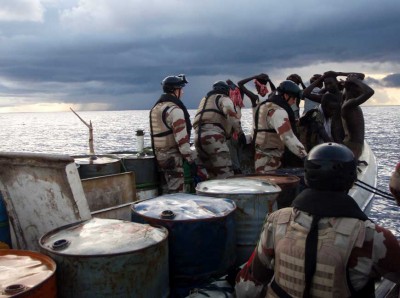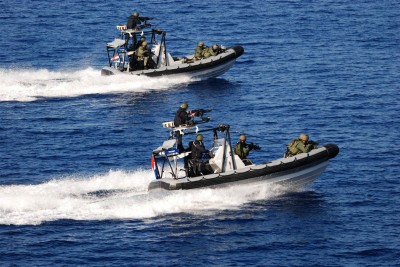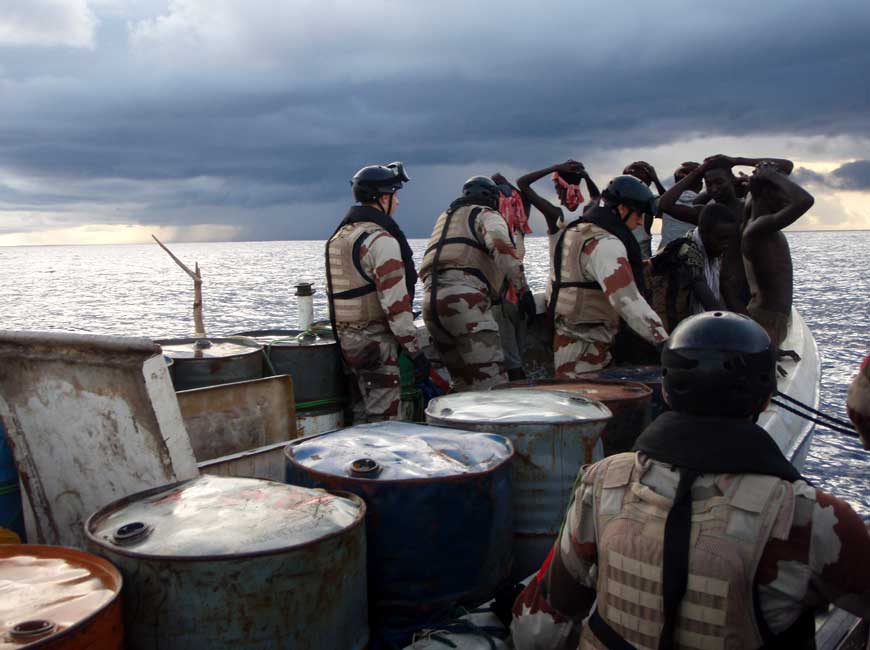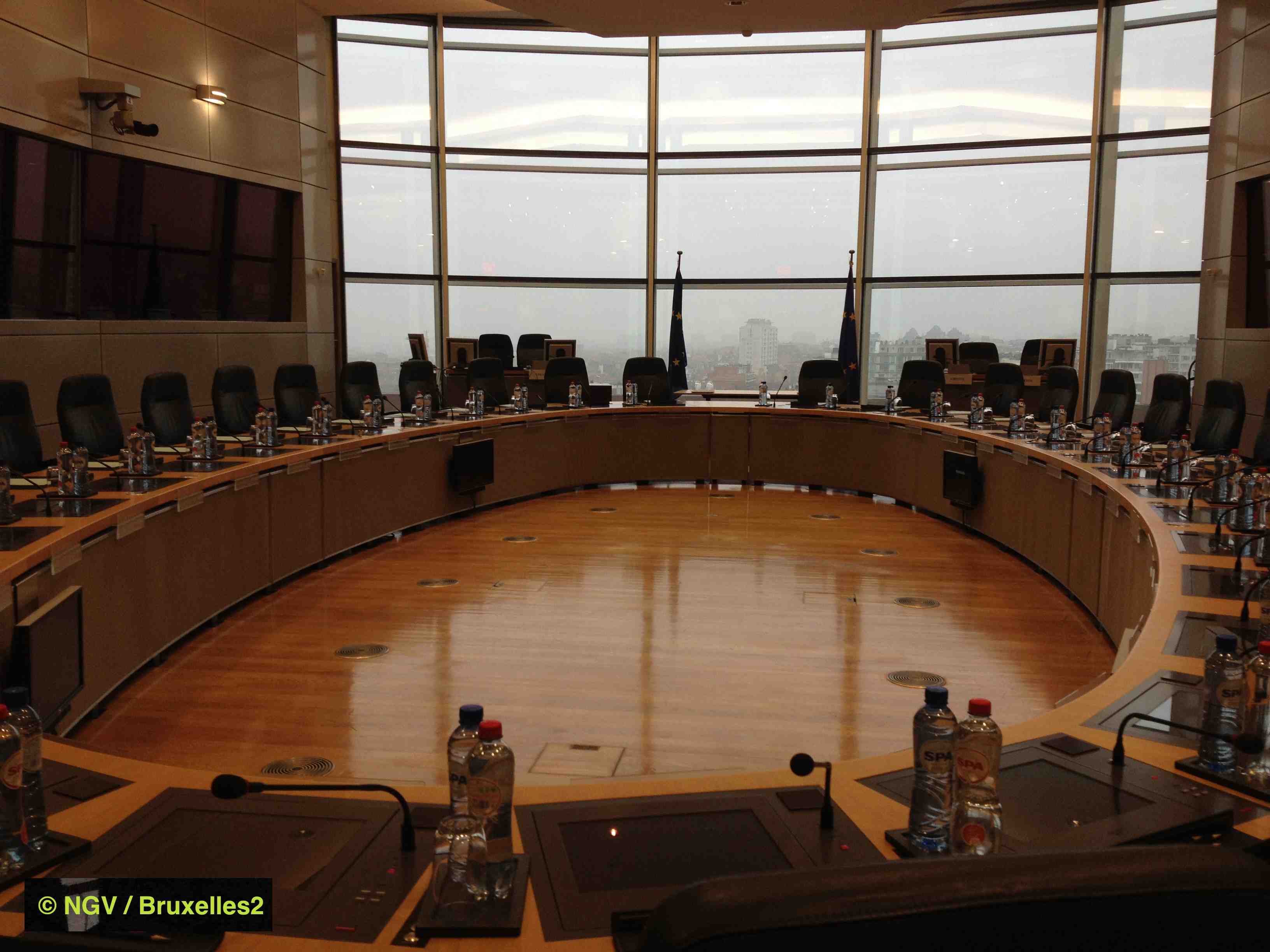18 months after the start of the operation, Atalanta in offensive mode

(BRUSSELS2) The 27 Foreign Ministers are meeting today (May 10) to take stock of the European Union's anti-piracy operation EUNAVFOR Atalanta, in particular its extension (1) and its new modalities of action .
Pushed mainly at the European level by the Spaniards, the “deterrence” aspect of Operation Atalanta has, over the months, grown in strength. And since February (2), he has deliberately become more offensive.
A behavior which was decided and implemented in a coordinated manner by all the multinational forces (CTF151 and NATO) and national forces (USA, Russia, etc.) present in the area during the monthly meetings of SHADE (Shared Awareness and Deconfliction) in Dubai . On the European side, this tactic was recorded in “military directives” issued by the commander of the operation, Rear Admiral Hudson, at the instigation of the European ships participating in the operation. It is reflected in three axes which can be summarized as follows.
First axis: interception of pirate groups At sea
Orders were given to certain ships to go on a hunt to intercept pirate groups without worrying about possible legal action. After the “thumb” from Kenya, and the “amber light” from the Seychelles, pursuit is only possible in the flag state.
This abandonment has, in return, an advantage: being able to act more quickly and simply. There is no longer any need to reach the coast to hand over suspects to authorities after an arrest. And it is no longer necessary to take precautions of collecting evidence and interviewing pirates, which completes any action.
The objective of neutralizing pirate groups can therefore be more systematic and takes place on a modus operandi identical: spotting by maritime patrol planes, intervention of a warship with overflight by helicopter, possible warning shot, and apprehension, disarming of the pirates (if they have not already done so themselves), admonishment , destruction of the mother ship or skiffs, release of said suspects aboard one of the remaining skiffs off the coast with enough food and fuel to reach the Somali coast. As an exception, the forces sometimes had to put the pirates back on the mother ship because there were too many of them. This tactic should therefore be refined, by keeping one or two skiffs instead of systematically destroying them,
this will allow us to have a “reserve” of boats to “loan” for the return (3).
This pursuit is not random. Europeans have identified several channels in the Indian Ocean that pirate groups use to launch attacks. On these axes, maritime patrol aircraft work, in three progressive concentric circles: the Luxembourg Merlin IIIs around the Seychelles, the Swedish Dash 8 then, the P3 Orions beyond over the entire Somali basin (4).
This action has an effect on the morale and finances of the pirates according to the Atalanta officers I interviewed on the subject. They see several effects. First, remove a certain number of groups from the area — we have seen that the groups do not go back to sea right away ". Second, those who participate lose their investment; The all-inclusive cost of a pirate group's action is estimated at around £10.000. The investor must therefore return to the pot. Finally, it produces a shock. Previously – apart from a shipwreck, “ there was little risk of piracy. Now it is no longer without risk. And we expect those so caught not to be heading back to sea anytime soon. »
Second axis: the disorganization of the rear bases
Several EUNAVFOR or NATO ships now regularly pass along the coasts, trying to intercept mother ships before they set sail (4). The effect can be surprise. Thus, the Johan de Witt, a Dutch EUNAVFOR ship, apprehends, in quick succession, two mother ships near the Somali coast. It also ensures maximum presence to intimidate (read: Johan by Witt catch a few more pirates). The next day, the spanish frigate, Victoria, intercepted a group of pirates from a mother ship and two skiffs 40 miles from the Somali coast on April 25. « When they see the warship coming, the pirate groups move », Says an expert on the file. By “blocking” a pirate port, “ we do not prevent pirates from taking action, but we delay their action and disorganize it ". It's a bit of a kick in the anthill.
Third axis: the recovery of pirated boats
All offensive actions have so far occurred under the national flag, either by ships belonging to the European operation which return to their original flag for the duration of the action; or by ships external to a multinational operation (Americans, Russians). They were rare until the beginning of April 2010 and always limited to particular circumstances or specific national issues. In fact, only the French (Square of Aces, Tanit) and Americans (Maersk Alabama) have already attempted a commando action to take back a ship from pirates, in particular situations: pleasure ships for the French, ship under military contract for the Americans (the action being more directed to free a hostage than to recover the boat ).

In quick succession, in recent weeks, two actions have been carried out to take back a boat from pirates, in different circumstances: this involves taking back a merchant ship already in the hands of pirates, with a large crew. The first action is carried out, at the beginning of April, by the Dutch frigate Hr Ms Tromp on the MV Taipan, a German ship (5). To go faster, the Dutch operate under the national flag. Corn " the action could have been undertaken under the European flag” assures a specialist in the file. The crew is released unharmed; The pirates were handed over to the German flag authority to be brought to justice (6). The second intervention took place on May 6 led by the Russian anti-submarine frigate Marshal Shaposhnikov after the capture of one of their ships, the Moscow University, served by a Russian crew. The crew was released unharmed, one pirate was killed in the action and several others injured.
Without revealing all the tactical aspects of this action, it is however subject to certain “technical” conditions: act quickly, in the first hours (24 hours, maximum 48 hours) of the capture of the boat by the pirates, and in all case, before the pirates reached the Somali coast. For this, early warning of a pirate attack either by the crew concerned or by a maritime patrol aircraft is essential. And the crew of the merchant ship must have respected the instructions, in particular: blocking of certain key elements of the ship (rudder, engines, etc.), securing the crew in a secure room at the bottom of the ship by having previously informed the multinational forces (the MSCHOA in Northwood or the UKMTO in Dubai). The commandos dropped by helicopter can then intervene quickly without risk of collateral damage.
And on balance…
It is undoubtedly too early to draw up an initial assessment. But it is clear that this “offensive” mode is starting to have a certain effect. Since the beginning, the Europeans and other forces have destroyed nearly 50 pirate groups. “ Which, according to the evaluations present – assuming a “capture” rate of 3 or 4 – allows us to estimate that we have avoided around ten captures of ships by pirates. » estimates an Atalanta sailor. Since the beginning of April, we can also note that around ten ships (only) have been captured by pirates, which seems to represent a certain slowdown in the “profitability” of piracy. We can imagine what this would have been like without the action of the coalition forces... NB: currently the pirates hold 18 ships and 393 sailors.
This action, however, has a downside. It extends the “catchment” zone of pirates who no longer hesitate to go “fishing” very far from their preferred zones, and in any case beyond the zone defined for European action. Now the attacks are getting closer to the Indian coast. More than 1200 miles from the Somali coast, we are actually not far from India (around 500 miles) and very close to the Maldives. Another development is that pirates are more systematically attacking “easy” catches, less protected: Yemeni, Indian or Thai fishing boats. Not always in the hypothesis of a “resale” but if only to refuel on the high seas or recover a ship that can be transformed into a “mother ship”. Witness this double evolution: the attack and capture on May 6 of a Taiwanese fishing vessel, the Tai Wuan 227, 1350 miles away! from the Somali coast.
(Nicolas Gros-Verheyde)
Read also:
- (1) Operation Atalanta extended for 2 years ?
- (2) Atalanta will receive the mandate to monitor the Somali coast
- (3) An initial assessment, in mid-March: 2 new pirate groups neutralized. Freed Pirates
- and another in mid-April: The Hr Ms Tromp returns home, mission accomplished, 73 pirates disarmed
- (4) For example, Absalon spots a large pirate camp near Hobyo
- (5) The Tromp Marines take action (Shift)
- (6) Ten pirates transferred to Germany via Djibouti and the Netherlands

